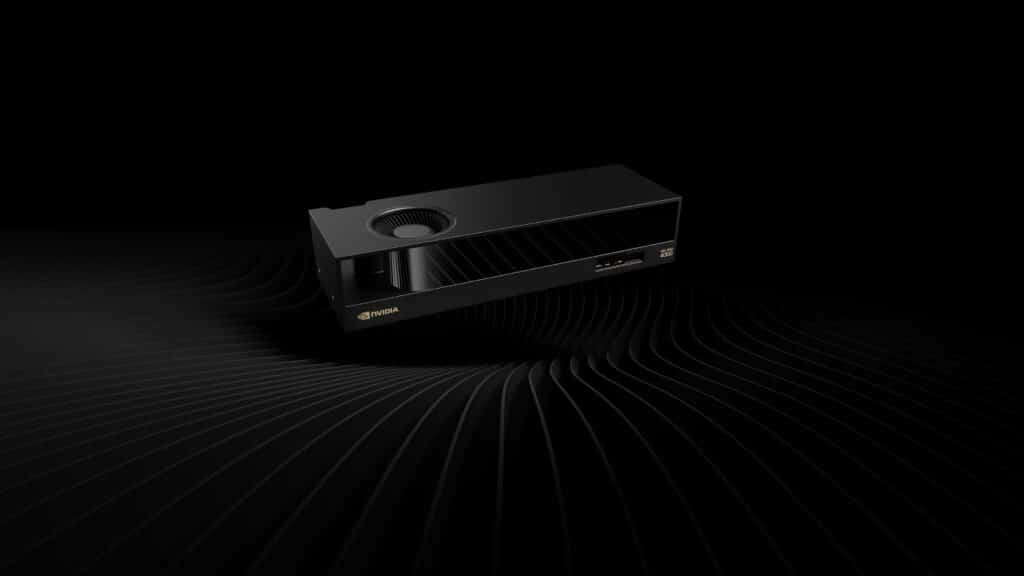The acceleration of artificial intelligence is no longer limited to large data centers. NVIDIA has unveiled two new GPUs designed to bring the performance of its Blackwell architecture to compact and low-power workstations: RTX PRO 4000 Blackwell SFF Edition and RTX PRO 2000 Blackwell.
These cards are built to meet the rising demand for professional AI across all sectors, regardless of the size or shape of the workstation. They target engineers, designers, content creators, and professionals in fields such as architecture, construction, healthcare, and public administration.
Compact AI Power
Both the RTX PRO 4000 SFF and RTX PRO 2000 feature fourth-generation RT cores and fifth-generation Tensor cores, doubling computational density compared to previous generations, with a maximum power consumption of just 70 watts for the 4000 SFF.
RTX PRO 4000 SFF:
- 2.5x more AI performance
- 1.7x more ray tracing capability
- 1.5x wider bandwidth compared to the previous generation
- Optimized for physics-based AI, advanced visualization, and complex simulations
RTX PRO 2000:
- 1.6x faster in 3D modeling
- 1.4x better performance in CAD
- 1.6x faster rendering
- 1.4x increase in image generation and 2.3x in text generation, critical for rapid iterations and prototyping
Real-World Applications in Business and Public Agencies
These GPUs demonstrate versatility through specific use cases:
- Mile High Flood District (USA): Using the RTX PRO 2000 Blackwell for flood simulations, 3D visualizations, and real-time AI workflows, effectively handling larger and more complex geospatial and hydrological datasets.
- Government of Cantabria (Spain): Testing with Esri ArcGIS Pro, doubling AI model fine-tuning speed thanks to additional Tensor cores and GDDR7 memory, improving high-resolution geographic data analysis and visualization.
- Studio Tim Fu (UK): Incorporating RTX PRO 2000 into UrbanGPT to generate real-time 3D urban designs, supporting zoning simulations and large-scale volumetric studies.
- Thornton Tomasetti (USA): Achieved a 27x speedup over CPU with their CORE.Matrix solver and 3x over RTX 2000 Ada generation, streamlining iterative structural analyses.
- Glüxkind (Canada): Using RTX PRO 2000 in AI-powered smart strollers, enhancing safety and real-time responsiveness for families.
Software Ecosystem for AI and Visualization
The Blackwell GPUs integrate seamlessly with NVIDIA’s comprehensive ecosystem, including:
- NVIDIA AI Enterprise: Suite for building, deploying, and scaling generative AI, computer vision, speech, and natural language across any infrastructure.
- NVIDIA Cosmos: Platform optimized for fast inference and edge deployment, featuring foundational AI models like Cosmos-Reason1-7B.
- NVIDIA Omniverse: Collaboration environment for digital twins and 3D workflows.
- CUDA-X: Libraries and tools supporting over 6 million developers and nearly 6,000 optimized applications.
Availability and Distribution Channels
The RTX PRO 2000 Blackwell and RTX PRO 4000 Blackwell SFF Edition are expected to be available by the end of this year.
- RTX PRO 2000 will be distributed through PNY, TD Synnex, and manufacturers like BOXX, Dell Technologies, HP, and Lenovo.
- RTX PRO 4000 SFF will be available via global distributors and manufacturers such as Dell Technologies, HP, and Lenovo.
Frequently Asked Questions
1. Are these GPUs only for AI?
No. While optimized for AI, they also deliver high performance in CAD, rendering, 3D modeling, scientific visualization, and data analysis.
2. What’s the main advantage of the Blackwell architecture in SFF format?
It enables high-end GPU power to be integrated into compact stations with lower power consumption without sacrificing performance.
3. Can they be used in industrial or edge computing environments?
Yes. Compatibility with NVIDIA Cosmos makes them suitable for physics-based AI and real-time analysis at the edge.
4. How do they improve content generation?
Up to 2.3x faster in text generation and 1.4x in image creation, significantly reducing prototyping and review times.
via: blogs.nvidia.com

